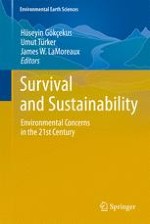2011 | OriginalPaper | Buchkapitel
Assessment of Dissolved Pollutants in Krishna River Using Mass Balance Approach
verfasst von : M. Chandra Sekhar, B. Shailamber
Erschienen in: Survival and Sustainability
Verlag: Springer Berlin Heidelberg
Aktivieren Sie unsere intelligente Suche, um passende Fachinhalte oder Patente zu finden.
Wählen Sie Textabschnitte aus um mit Künstlicher Intelligenz passenden Patente zu finden. powered by
Markieren Sie Textabschnitte, um KI-gestützt weitere passende Inhalte zu finden. powered by
